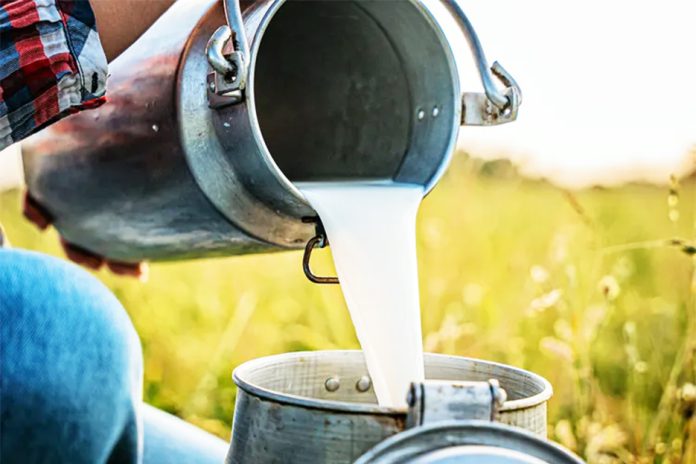What Is Raw Milk?
Milk contains many bacteria and other microbes. That’s because all animals, even healthy ones, carry bacteria and can pass them into their milk. Some of these microbes can cause dangerous diseases. To protect you, many dairy farmers kill these germs by heating the milk to a certain temperature. This process is called pasteurization. Milk that hasn’t been pasteurized is called raw milk.
Today, most milk in the United States is pasteurized. You can still buy raw milk in some states, but it’s not recommended. The CDC and other health agencies advise against drinking raw milk because it can lead to dangerous diseases like bovine tuberculosis and listeriosis.
In the past, many people got sick from the bacteria in raw milk. But over the last hundred years, pasteurization has dramatically reduced the number of illnesses caused by drinking milk.
But that doesn’t mean getting sick from raw milk is a thing of the past. That’s because some people still drink raw milk. Over the past few years, there have been dozens of disease outbreaks caused by raw milk. Hundreds of people get sick each year, and some need to be hospitalized. One study estimated that 840 times more people get sick from raw dairy products than from pasteurized products, and 45 times as many people need to be hospitalized.
Despite this, there are still many rumors and misconceptions about raw milk. Some people think it has healthy bacteria and extra nutrients. But there’s no research to support this.
In reality, raw milk and pasteurized milk have similar health benefits, but raw milk is much more likely to carry dangerous bacteria. When it comes to drinking raw milk, the risk outweighs any possible reward.
How long does raw milk last?
Raw milk has an average shelf life of 7-10 days. How long it lasts depends on how much bacteria is in it.
Raw vs. Pasteurized Milk
Raw and pasteurized milk are basically the same, except that raw milk can contain bacteria.
These bacteria can come from:
- An animal’s poop or skin
- The soil, water, or air in the barn
- Milking equipment
Pasteurization kills the germs in milk that can cause foodborne illness. It doesn’t change the milk’s nutritional value.
Is raw milk illegal?
Raw milk is illegal in nearly half of U.S. states. But even in states where it’s legal, there are laws that farmers and buyers need to follow.
Every state has different laws. Many places have rules about farm licensing, the milking and bottling process, or labeling. Some states might only allow the sale of raw goat milk, or raw milk might be allowed only in pet food. In some states, you might even need a prescription to buy raw milk.
In addition, states decide where and how raw milk can be sold. Some states allow its sale:
- In retail stores
- At farmers’ markets
- At the farm where it was produced
- Through “cow-share” programs (when a person buys part of a private herd)
Laws requiring pasteurization can protect people from getting sick. About 4 in 5 disease outbreaks linked to raw milk happen in states where raw milk is legal in some form.
Types of Raw Milk
Along with raw cow milk, you can get raw goat milk and raw sheep milk. These are collected from goats and sheep, respectively. They aren’t pasteurized.
Raw goat milk
One cup of raw goat milk contains:
- Calories: 168
- Protein: 9 grams
- Fat: 10 grams
- Carbohydrates: 11 grams
- Fiber: 0 grams
- Sugar: 11 grams
Raw goat milk is a good source of:
- Calcium
- Iron
- Vitamin C
Raw goat milk, like pasteurized milk, is an excellent source of vitamin A.
Raw sheep milk
One cup of raw sheep milk contains:
- Calories: 264
- Protein: 14 grams
- Fat: 17 grams
- Carbohydrates: 13 grams
- Fiber: 0 grams
- Sugar: 10 grams
Raw sheep milk is a good source of:
- Riboflavin (vitamin B2)
- Vitamin B12
- Calcium
Like pasteurized milk, raw sheep milk is a great source of vitamin A.
Milk Benefits
Even though it’s getting more popular, there are no scientifically proven benefits to drinking raw milk. In fact, health agencies like the FDA recommend drinking only pasteurized milk.
But there’s plenty of research supporting the health benefits of milk in general, including:
Organ health
The vitamin A in milk supports several organs, including your heart, lungs, and kidneys.
Lower blood pressure
Milk is an excellent source of potassium, a mineral that has been linked to lower blood pressure and good overall heart health.
Eye health
Vitamin A, which is found in all forms of cow’s milk, has been shown to support eye health. It lowers your risk of macular degeneration, a disease that can affect the eyesight of older people.
Bone health
People of all ages need calcium to maintain bone health. But the research is unclear about whether milk is the best source of calcium for this purpose. The vitamin A in milk may actually weaken bones.
Source: webmd.com









